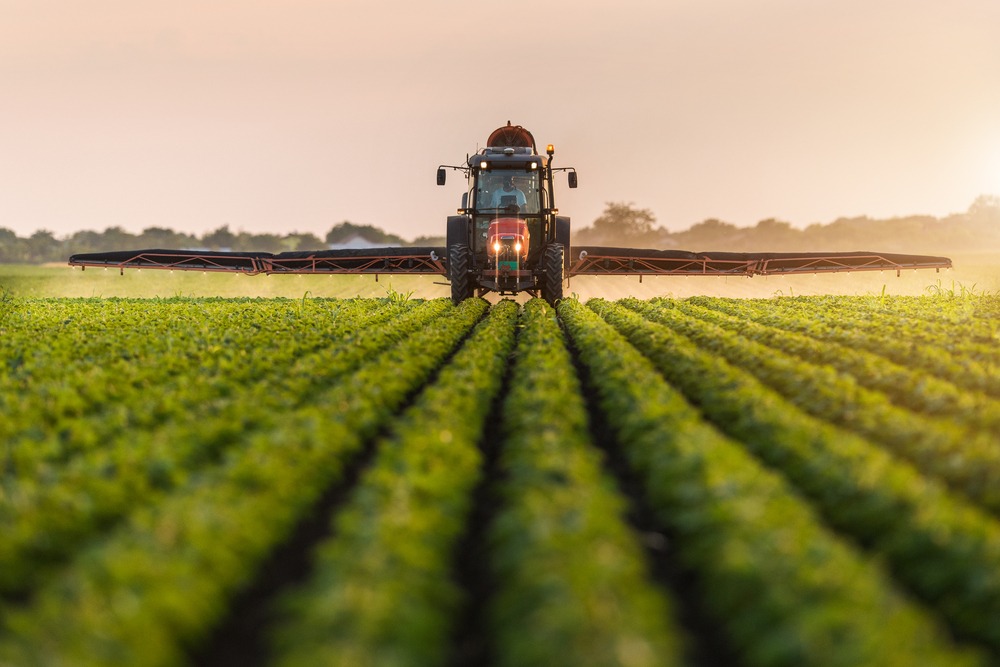Agriculture is a specific branch of the economy, which is characterized by the constant and continuous appearance on the market of modern solutions and promising technologies that improve and simplify the life of farmers and agrarians. High-performance technology, automatic systems, robotic platforms and equipment, digital applications, as well as resource-saving technologies – all these areas are constantly being improved from year to year, enhancing both quality and functionality.
Innovations in food and agribusiness help to significantly optimize costs and increase efficiency of a wide range of agricultural operations by providing higher yields, lower production costs, and better food quality. All that while also preserving resources and hence mitigating the environmental impact of agriculture.
Thanks to the advancements in agritech, farming and food production in 2021 is fundamentally different to what it has been decades ago. And as the world population keeps growing, farmers have no choice other than seeking new ways and technologies to satisfy the food demand of all these people. From crop health imagery to drones and robotic tractors, new tech has offered numerous valuable solutions for effective and sustainable food production.
In this article, we have gathered top 5 food and agribusiness technologies that have already proved their effectiveness in helping the industry experts to keep up with the growing population, climate change, and more. Let’s dig in deeper to see what solutions to what issues they actually offer.
AI/ML
Farming activities include soil treatment, seed planting, fertilizers and pesticides application, irrigation, harvesting, and storing. All of these require thorough planning based on reliable data and its analysis. And that is where AI and ML come into play. AI-powered software, devices, and algorithms help collect, analyze, and store all the necessary data the farmer needs for smart decision-making.
Here is what AI and ML can be used for in farming:
- Crop yield forecasting and quality assessment
- Crop sustainability analysis
- Weed elimination thanks to smart and automatic crops recognition
- Crop infections and diseases identification
- Smart harvesting and pricing planning
- Production waste reduction while meeting food demands
- Use of autonomous robotics for performing field activities and cattle management
Crispr Gene Editing
CRISPR is the latest technology in gene editing. It enables breeders to make precise and targeted improvements. Unlike genetic modification (GMO), CRISPR gene editing is not associated with the transfer of alien genetic material between species. CRISPR are specialized sections of DNA. Protein Cas9 (or CRISPR-associated) is an enzyme that acts like a pair of molecular scissors capable of cutting out strands of DNA.
This scientific breakthrough is shaping the future for both healthcare and agriculture. In medicine, researchers are working to treat genetic diseases. In agriculture, CRISPR has the potential to address many important challenges, for example, associated with climate change.
CRISPR gene editing allows for making crops more nutritious, tastier, and more resistant to heat and stress. It also enables breeders to give plants other properties: for example, cut out the allergen gene from peanuts or introduce resistance to a deadly fungus into bananas. The technology can also be used to edit the genome of domestic animals – for example, cows.
Automation
Automation of production processes in agriculture is the use of automated systems and devices capable of partially or completely relieving personnel from solving labor tasks to control and manage various procedures in food production. Usually, automation also implies the use of AI for easier data collection, processing, and storage.
It is advantageous to equip livestock farms with such automated systems as:
- Devices for automatically creating an optimal microclimate, heating, ventilation. A favorable microenvironment has a positive effect on animal health
- Water supply systems. It is no longer necessary to manually fill the drinking bowls
- Line for the distribution and preparation of feed, vitamin and mineral mixtures Compositions are made according to specified recipes
- Continuous milk primary processing systems
- Production lines for milking cows
In the field of crop production, agricultural monitoring systems and devices are used:
- Devices for analyzing plants vegetation
- Devices for differentiated fertilization
- GPS navigation systems, satellite monitoring software
- Soil sample analysis systems
- Ground sensors that control the humidity and temperature of the air, soil, the state of plants
- Yield forecasting technologies
- Systems of automatic differentiated irrigation and seeding
- Robotic field equipment (seeders, harvesters, etc)
With automation technology and powerful communication solutions at their disposal, farmers can easily understand when is the best to harvest, which areas already need more watering, which crops need special attention, and which are healthy.
Blockchain
Blockchain technology can be used to track crop growth, consolidate information on food quality, or record its path after it leaves the farm. This helps to increase the transparency of food supply with immutable records from production to consumption. Such data can facilitate the transmission of information at every stage of the supply chain. This can prevent illegal and unethical production and distribution that undermine the sustainability and food security of the community as a whole.
